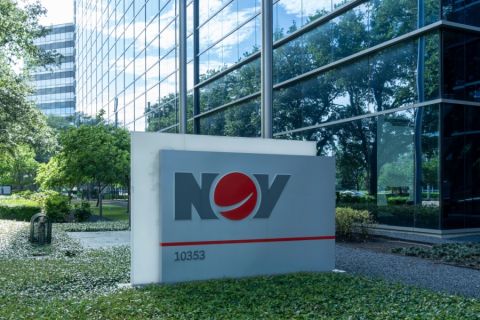The same day Arnold Schwarzenegger became California's governor-elect, oil and gas executives also were flexing their muscles in the Golden State. The Independent Petroleum Association of America was hosting its first West Coast oil and gas investment symposium (OGIS) in San Francisco. Patterned after the OGIS held each spring in Manhattan, the new event took aim at the West Coast investor community and also was meant to provide a fall update on trends in the oil and gas industry. In addition to the formal presentations, each of the 43 presenting companies had a two-hour opportunity for private one-on-one visits with investors. The OGIS attracted about 350 buysiders, analysts and executives, a higher turnout than anticipated. "This exceeded our expectations," said Bill Moyer, vice president, capital markets, IPAA. "We are already planning to do this at the same time next fall." Harold Korell, chief executive officer of Southwestern Energy Co., said, "This was a good event for us because we had about six one-on-ones with some new people." Wayne Andrews, an analyst with Raymond James & Associates, went to San Francisco to meet with institutional clients in the Bay Area and accompany some E&P companies in their meetings as well, to present his macro outlook and how a particular E&P company might play into that. "It was a good one-two punch," he said. The formal presentations resounded with the same themes heard at other energy conferences this year: declining natural gas deliverability, the need to continue reducing debt, and corporate growth strategies. "We are trying to maintain our base level of production. Our decline is about 30% per year, not counting acquisitions," said Terry Rathert of Newfield Exploration Co. The Houston-based company has been on a growth spurt while still reducing costs. Lifting costs alone have fallen from 52 cents per thousand cubic feet equivalent in 2001 to 41 cents today. XTO Energy Inc. has grown materially in the past few years, but also keeps its eye on profitability. "The value creation comes in when you generate cash flow in excess of what it takes to keep your company's production flat," said Louis Baldwin, XTO chief financial officer. Added Gary Simpson, head of investor relations, "We will manage our prospect inventory to manage the decline. If the nation's decline rate is 26% and ours is 13%, then we think we have an advantage." Many of the companies reported a renewed focus on their reserve-to-production (R/P) ratio. They are trying to lengthen that toward eight to 10 years, whereas a few years ago, The Street seemed to prefer a shorter R/P of three or four to get cash flow in the door more quickly. But one attendee was a bit skeptical about the value of longer R/P ratios. "You can sell your Gulf Coast properties that have an R/P of four or five years and focus on reserves elsewhere that have an R/P of 20 years," said Bruce Lazier, E&P analyst, Ispyoil, Dallas. "You may have added to your own reserves but you aren't necessarily increasing your production or the country's-you are just spreading it out over more years." High oil and gas prices have enabled many companies to strengthen their position this year. Penn Virginia Corp. has a debt-to capital ratio of only 25%. For Teton Petroleum Co., it is zero. KCS Energy retired its remaining senior notes and improved its net debt-to-proved reserves ratio from 95 cents per thousand cubic feet equivalent to 77 cents. Comstock Resources Inc. has paid down $33 million of debt this year, reducing its debt-to-capital ratio to 56% from 64% in mid-2002. XTO's Baldwin said, "Since the turn of the century we've taken higher gas prices right to the bottom line. And we use excess cash flow to reduce debt." Penn Virginia chief financial officer Frank Pici said, "We are more interested in deploying our capital well than in growth for its own sake, so we emphasize low-risk, moderate-return activities, balanced with higher-risk, Gulf Coast activity." -Leslie Haines
Recommended Reading
NOV Announces $1B Repurchase Program, Ups Dividend
2024-04-26 - NOV expects to increase its quarterly cash dividend on its common stock by 50% to $0.075 per share from $0.05 per share.
Repsol to Drop Marcellus Rig in June
2024-04-26 - Spain’s Repsol plans to drop its Marcellus Shale rig in June and reduce capex in the play due to the current U.S. gas price environment, CEO Josu Jon Imaz told analysts during a quarterly webcast.
US Drillers Cut Most Oil Rigs in a Week Since November
2024-04-26 - The number of oil rigs fell by five to 506 this week, while gas rigs fell by one to 105, their lowest since December 2021.
CNX, Appalachia Peers Defer Completions as NatGas Prices Languish
2024-04-25 - Henry Hub blues: CNX Resources and other Appalachia producers are slashing production and deferring well completions as natural gas spot prices hover near record lows.
Chevron’s Tengiz Oil Field Operations Start Up in Kazakhstan
2024-04-25 - The final phase of Chevron’s project will produce about 260,000 bbl/d.




